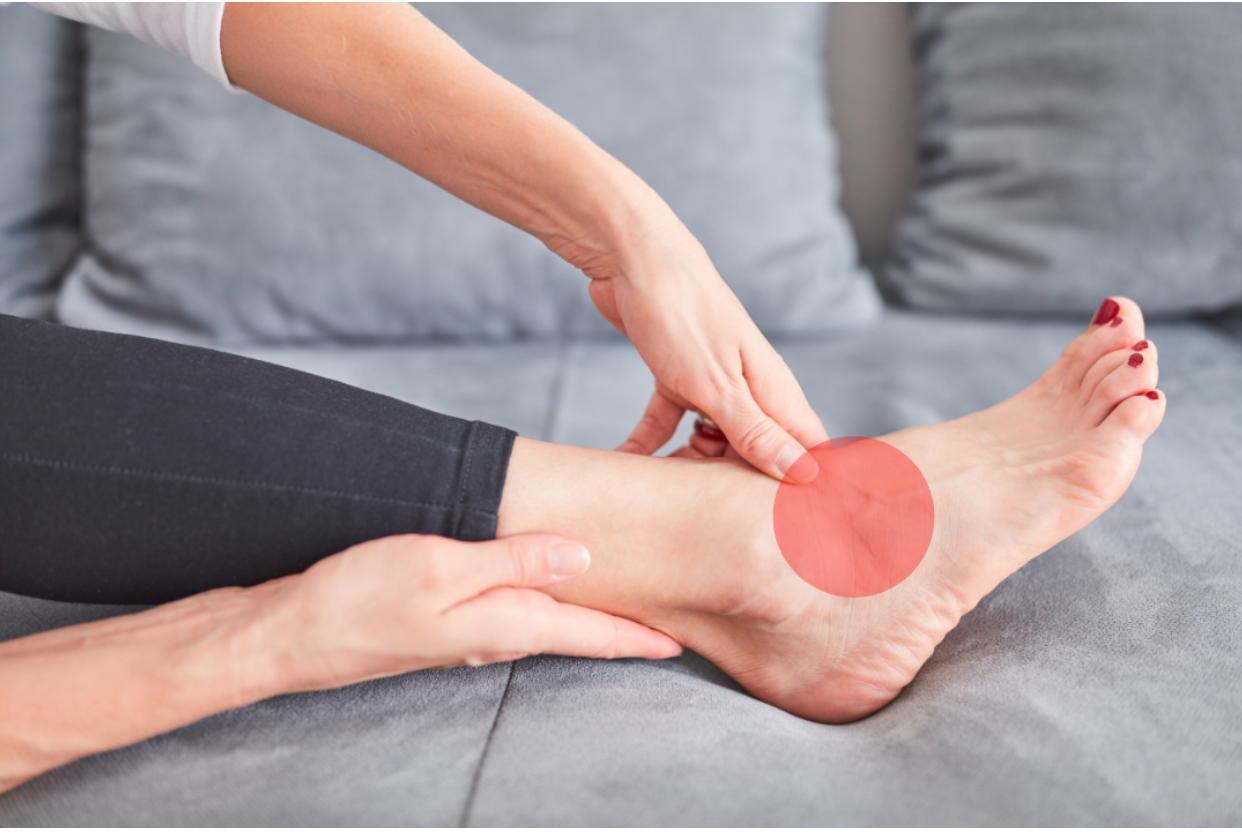
Jump to section
A tarsal coalition involves the abnormal fusion between two or more bones in the foot, between the heel and the midfoot. This can have a significant impact on a person’s mobility and their quality of life.
Being diagnosed with a tarsal coalition means that you have an unusual connection or fusion of two or more bones in the tarsal region of the foot, which is at the hindfoot (the back of the foot). The bones involved in the coalition often include the calcaneus (heel bone), talus (one of the ankle bones), navicular (on the inside of the foot in front of the ankle), and sometimes the cuboid bone (in front of the ankle on the outside of the foot).
As the bones are fused or otherwise abnormally connected, their movement is restricted. This can lead to pain and discomfort any time you’re on your feet, walking or active. A tarsal coalition is often congenital, meaning it is present from birth, but symptoms may not become apparent until later in childhood or adolescence when the bones are maturing and undergoing more stress.
A tarsal coalition is thought to have a genetic component in its development, such as from an error when the cells that form the tarsal bones are dividing in the womb. A tarsal coalition can also result from an infection, arthritis or an injury, or from specific conditions, such as fibrous tissue formation or cartilage anomalies between the bones.
The main symptoms of tarsal coalition include pain and stiffness in the area where the bones are connected. This pain is typically aggravated by weight-bearing, such as prolonged standing and physical activity. You may also notice:
Diagnosing a tarsal coalition involves a combination of a clinical evaluation with your podiatrist, imaging studies such as an x-ray or CT scan, and getting to know your history - such as when your symptoms started and what aggravates them. If we suspect that you may have a tarsal coalition, we’ll refer you for imaging so we can see the bones and the areas at which they are fused, giving us a very clear diagnosis and best helping inform the ideal management plan for you.
The best approach to treating a tarsal coalition depends on your current symptoms and their severity, the extent of bone fusion, and your age. While we can’t “get rid” of a tarsal coalition due to the nature of the condition, we do offer treatment solutions designed to optimise your comfort, reduce your pain and keep your feet supported and functioning well. Part of your care will include assessing your foot mechanics, evaluating your gait patterns, and identifying any abnormalities that might contribute to your discomfort and symptoms. The treatments we may use include:
Surgery for a tarsal coalition
While the treatment options above are the first line of treatment, if following treatment your foot continues to cause you pain and create limitations on your daily life, surgery may be considered. We will refer you to a trusted orthopaedic surgeon who will discuss options including fusing the affected joints solidly, or removing additional bone to try to restore more normal motion between the bones involved in the coalition.
As a tarsal coalition is primarily congenital and develops in the womb, a tarsal coalition is very difficult to prevent. However, early diagnosis and management can help prevent your symptoms from worsening and leading to greater pain and other complications. If your child is complaining of foot pain, always take them to see a podiatrist as soon as you’re able.
With the right care, most of the patients that we work with can experience a reduction in pain and improvement in mobility - and therefore their quality of life on a daily basis. The results a person experiences will vary based on the severity of their coalition and the age at which their symptoms arise, but our podiatrists will always work with you to help you get the best results.
Is a tarsal coalition common in both feet?
A tarsal coalition can develop in one or both feet, but it's not uncommon for the condition to be present in both. You can still have different symptoms and severity between the two feet.
Can a tarsal coalition be present without causing any symptoms?
Yes, a tarsal coalition can be present without causing noticeable symptoms. Some people will have a coalition but will only experience symptoms later in life when the bones and joints are subjected to more stress.
Can a tarsal coalition lead to other foot problems?
Yes, a tarsal coalition does have the potential to lead to other foot problems if left untreated, such as flatfoot deformities, altered gait patterns, and increased risk of arthritis in the affected joints.
Can adults develop tarsal coalition, or is it only present from birth?
While a tarsal coalition is primarily present from birth, it is possible for adults to develop symptoms later in life due to
factors like increased physical activity, changes in biomechanics, or the gradual accumulation of stress on the affected area.
| Monday | 7:40am - 6:00pm |
| Tuesday | 7:40am - 6:00pm |
| Wednesday | 7:40am - 6:00pm |
| Thursday |
7:40am - 6:00pm |
| Friday | TEMP CLOSED |
| Saturday | CLOSED |
| Sunday | CLOSED |
Ground Floor, 344 Queen Street,
Brisbane City QLD 4000
| Monday | 7:40am - 6:00pm |
| Tuesday | 7:40am - 6:00pm |
| Wednesday | 7:40am - 6:00pm |
| Thursday |
7:40am - 6:30pm |
| Friday | 7:40am - 5:00pm |
| Saturday | 7:40am - 4:30pm |
| Sunday | CLOSED |
Newmarket Village, 114/400 Newmarket Rd, Newmarket QLD 4051